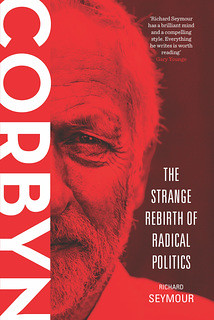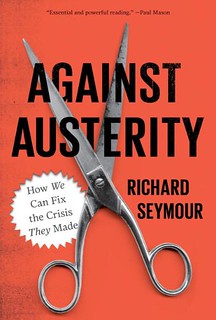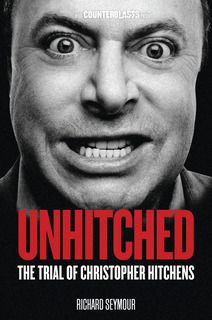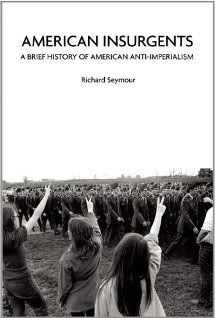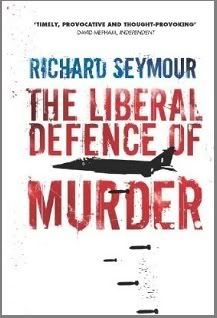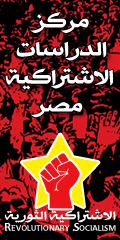Sunday, February 27, 2005
Protecting the Khmer Rouge genocidaires. posted by Richard Seymour
I've written at some length before about Western complicity with the Khmer Rouge , and about the attempts by politicians like Sam Rainsy to exploit discontent in Cambodia about the increasingly authoritarian trends in the Hun Sen government.Now, as there are attempts to prosecute those responsible for the Cambodian genocide, signed into law by the UN and the Royal Government of Cambodia on 6th June 2003, some are naturally very worried. For instance, in the same month, Colin Powell took a brief trip to Cambodia to persuade Prime Minister Hun Sen to sign an Article 98 agreement. An Article 98 agreement is one in which nations that are party to the International Criminal Court agree to exempt US personnel from prosecution. The agreement was signed and endorsed by the Cambodian government on 3rd October 2003. No one will stand trial for the criminal bombardment of Cambodia in the years 1969 to 1973, which killed hundreds of thousands of people; no one, Chinese, British, American or Australian, will stand trial for aiding and abetting the Khmer killers when they were attempting to retake the country during the 1980s; no British or American government figure from the time will stand trial for attempting to block NGO assistance to a struggling post-Pol Pot country. The trials will be temporally limited to the period of Democratic Kampuchea, 1975-9, in which between 1.5 and 2 million people died at the hands of the Khmer Rouge.
No reason to be purist about it: those who were involved in that grotesque regime deserve to be tried, even if it is only a partial victory, even if the other criminals are left out of it for reasons of geopolitics. However, the arduousness of this process, and the attempts to block it by governments who legitimise their actions with the language of human rights, should not be forgotten.
Pol Pot with Chinese ambassador Sun Hao at Phnom Penh airport.
Aiding and abetting.
China was initially the only regime to give the Khmer Rouge regime aid. In 1979, however, Jimmy Carter approved aid to the recently deposed regime, and gave the green light for continuing recognition of the KR at the UN. Although the Whitehouse and the CIA knew the locations of the KR in Thailand, although they knew of the whereabouts of Pol Pot and Ieng Sary, there was no interest in arresting them or trying them. (To this day, the KR member and delegate to the UN, lives at Mount Vernon, New York, untouched and untouchable, like so many of the US' former war criminal proteges). Indeed, Zbigniew Brzezinski later admitted that even when Carter's official policy was to disapprove of the Khmer Rouge regime, he was secretly backing the Chinese policy:
I encouraged the Chinese to support Pol Pot. I encouraged the Thai to help the DK [Democratic Kampuchea] ... Pol Pot was an abomination. We could never support him but China could.
Well, Carter emoted when Pol Pot finally kicked the bucket, before receiving the Nobel Peace Prize in 2002.
Gregory Stanton took leave from his studies of International Law at Yale in 1980 to direct the CARE field office in Phnom Penh. He realised that Cambodia was state-party to the Genocide Convention, and the Khmer Rouge still officially held Cambodia's seat at the UN. This meant that there was a good case for taking Cambodia to the World Court for breach of the Genocide Convention. He himself had been present, along Ben Kiernan, at the exhumation of a mass grave where 7,000 people had recently been buried. So, he approached the Chairman of the American Association of the International Commission of Jurists. Nothing doing. The Chairman, a lawyer named William Butler, discussed the idea with the State Department and came back saying that he could not assist and that he did not know whether the killings even constituted genocide.
Similarly, when David Hawk, the chairman of the Cambodian Documentation Committee, tried to get Australian backing for such a case, he found a receptive ear in the Labour government's foreign minister Bill Hayden, but the government eventually declined the case. It transpired that the Australians had been in contact with the State Department, who remained opposed to any prosecution on the grounds that it would risk breaking up the coalition (composed mainly of Khmer Rouge and Norodum Sihanouk's 'non-communist resistance') it was supporting in Cambodia to oust the Vietnamese. The State Department had gone behind Hayden's back to warn Prime Minister Bob Hawke that such moves would put serious strains on US-Aussie relations.
When in 1987 the Cambodian Documentation Commission mounted a public and vociferous campaign, involving 200 survivors of the KR regime, there was much air-kissing and arse-kissing from the world's governments. A lowly figure from the Reagan administration called David Lamberton expressed sympathy, but said that invoking the Genocide Convention was fraught with political complexities, and could be precipitous. It could indeed, for the US had only ratified the convention in 1986 after 40 years of stalling, and its implementation was only to be approved by Senate in 1988, with a cluster of 'sovereignty' protections which reduced it to a symbolic gesture. Bob Hawke was 'deeply moved', but worried about the possible implications of trying Khmer Rouge members on the Genocide Convention (especially since his ally, the Indonesian junta, was barking similar pleas at the time). Those states that supported the KR politically and militarily were not about to challenge them legally; those states that did not pretended that they couldn't support a legal challenge, since that would de facto 'recognise' the KR as the natural government of Cambodia (red herring, since the Genocide Convention applies to states not specific governments). Under Article 8 of the Genocide Convention, the UN itself was allowed to take action: it, typically, ignored that suggestion, and shelved any reports referred to them on the matter.
Inviting the tiger into the tent.
One thing that would certainly have put a stop to any trial attempts would have been the inclusion of the KR in government. Yet, when the Hun Sen regime started serenading for peace negotiations, the one thing that was insisted upon by Western and Eastern governments was that the KR would have to be part of any future government. This was first articulated by the US ambassador in Bangkok in response to Thai initiatives to secure a peace between the warring factions that would have excluded Pol Pot's men. China also insisted that no government could be formed without the KR, and the majority of the UN Security Council, including France, the UK and America would, sided with them. They even went as far as to insist that in the negotiations (at the Paris Peace Conference, see passim), Hun Sen be seated next to the KR representative. When the talks broke down, the US Secretary of State James Baker accused the Hun Sen regime of being 'stubborn' because they insisted on the exclusion of Pol Pot's men.
The USSR agreed with Hun Sen - a four-party government that would legitimise 20,000 KR militants, leaving them free to roam Phnom Penh, would have dangerous implications. When, in October 1989, the last of the Vietnamese troops left Cambodia, Prince Sihanouk urged a general uprising, and the KR launched an initiative that eventually took Pailin. Meanwhile, back at the negotiating table, Sihanouk was still trying to blot out the word 'genocide' from discussions, while Khieu Samphan indignantly rejected such language on behalf of the KR. Australian foreign minister Gareth Evans regretted that the talks had broken down over 'atmospherics'. As the KR continued its offensive, ambushing several trains and killing the civilians in them, there were angry grumblings from the US Senate about cutting off support for the KR-dominated 'coalition'. James Baker announced in July 1990 that it was no longer the position of the US to support the CGDK's filling of Cambodia's seat at the UN.
The KR continued to be represented at talks, in particular by Khieu Samphan and the former interior minister responsible for the secret police Son Sen. Pol Pot was also present at the talks in Pattaya (a seaside resort in Thailand largely known to US navy men for furnishing unlimited sexual satisfaction at low prices), although his presence was a closely guarded secret until the journalist Nayan Chanda and the photographer Nhem Eng reported it. The proposed deal that emerged was one largely based on China's terms, fully backed by Washington. The USSR and Vietnam, though unhappy, urged the Cambodian government to accept. When the Japanese proposed a commission to investigate crimes by the KR in early 1991, US diplomat Richard Solomon shot it down, saying it would 'confuse' the international peace settlement. At the second Pattaya meeting in October 1991, it was agreed that Pol Pot and his men would enjoy the same rights as any other citizen. Although they themselves would not stand for election in any future poll, they would be allowed to campaign for their men. There was to be no sanction, no trial, no reference to genocide in the final text. Full and unequivocal legitimation of the KR was entailed.

Pol Pot with Ieng Sary, (left) and Son Sen (right).
Khieu Samphan and Son Sen returned to Phnom Penh, free men, legitimised by an international consensus supported by America, Britain, France, Australia and China. Angry protesters confronted the two men, and Khieu Samphan had to take refuge in a wardrobe until rescued by security forces, by then bleeding from his skull and ignominiously bandaged with a pair of Y-fronts.
KR-controlled Pailin and Anlong Ven continued to experience the brutality of Pol Pot's men, even as UN Human Rights Day was celebrated in Phnom Penh. The UN's press-release on the day made no reference, even euphemistically, to the genocide. UNTAC, which was to supervise the elections for a new government, could not enter KR controlled territories. Not one of the pledges made by the KR at Paris was adhered to, they refused to disarm and continued their campaign of terror in several parts of the country, killing many of ethnic Vietnamese origin. Even UNTAC sustained many casualties, with 20 of its personnel being killed in attacks. The Thai military did not bother adhering to its agreement to cease arming the KR, and the two parties did profitable business in rubies from Pailin. UN military observers and peacekeepers on the Thai border were shelled and kidnapped.
Through all of this, UNTAC never called the KR to account, and it was the KR in the end who decided to close down their legally sanctioned headquarters in Phnom Penh and escalated attacks on the UN, threatening to sabotage the forthcoming elections. Had they not done so, it is probable that some of Pol Pot's henchmen would have joined the new government, sanctioned and approved by the 'international community'.
Changing alliances, permanent interests
Campaigning groups like the Campaign to Oppose the Return of the Khmer Rouge (CORKR), which involved Cambodian activists as well as Gregory Stanton, David Munro, Ben Kiernan and John Pilger, could begin to claim some success by 1994, however. It had gained backing from over 100 NGOs and, pressing for a Cambodian Genocide Justice Act, several Senators. The Act was finally passed into law by Congress, and Bill Clinton signed it off in May 1994. Naturally, the Act's temporal applicability was limited to the period from 17th April 1975 to 7th January 1979. It did, however, lead to US government funding for the Cambodian Genocide Program headed by Ben Kiernan. It also saw the Office of Cambodian Genocide Investigations launched.
At the same time, the UN's outlook had dramatically changed. The International Criminal Tribunals set up in response to crimes in Yugoslavia and Rwanda had set legal precedent, however selectively applied. The new Special Representative of the Secretary General for Human Rights was Thomas Hammarberg, a former executive director of Amnesty International in London. On the geopolitical side, the policy of bleeding Vietnam white had been largely successful, and the Khmer Rouge were no longer essential allies of the West. Many tourists were kidnapped and executed by the KR, including a British de-miner called Christopher Howes in 1998. This brought Derek Fatchett of the Foreign Office into the situation, and he demanded that certain men, including the murderous Ta Mok, be brought to justice. This proved difficult, since those responsible were part-time residents in Thailand, with whom Britain enjoys a cosy relationship. No significant pressure was placed on the Thai authorities, and no one has been charged with Howes' murder.
 Ta Mok.
Ta Mok.At the same time, factions which had been involved in the CGDK movement in the 1980s began to have severe differences with Hun Sen and his Cambodian People's Party (CPP). The two sides fought it out on the streets, and the CPP side won, forcing Prince Ranarridh (son of then King Sihanouk) into exile. 70 civilians were killed, and several military officers from Sihanouk's Funcinpec movement were executed. Ranarridh and Sam Rainsy, both formerly in coalition with the KR, protested before the UN, and the Credentials Committee voted to keep Cambodia's seat vacant.
The Khmer Rouge was simultaneously disintegrating into inner schisms, and this was evidenced by Pol Pot ordering the assassination of his former ally, Son Sen, and the subsequent 'trial' in which Pot was 'convicted' of crimes of leadership, none of which had to do with the genocide against the Cambodian people. Pot kicked the bucket in 1998, just as the US finally reversed years of support for him and decided to support moves for an international criminal tribunal. Negotiations did begin between the UN and Cambodia, although it was clear throughout that China was adamantly opposed to any trial.
Sam Rainsy, a former CGDK spokesperson, reactionary anti-Semite, viciously anti-Vietnamese demagogue, and failed finance minister, did his best to exploit fears about any possible trial by telling the lower ranking KR members in Pailin and elsewhere that the only way to avoid trial was to vote for him in the 2003 elections. In those elections, he gained 22% of the vote. His party's candidate for governor in Pailin had been Ta Mok's neice, Ven Dara.
Nevertheless, and inter an awful lot of alia, the negotiations continued and finally produced an agreement between the UN and the Royal Government of Cambodia in 2003, which was then ratified by the UN General Assembly. A tribunal is now supported by Britain and America. Although most KR officials remain at large and are ageing (they are now mostly in their seventies, and the notorious torturer Kang Kek Iue has recently been admitted to hospital), negotiations are continuing as to the possible framework for trying them.
It would be ridiculous to oppose the trials, but no amount of sanctimony from our own governments, and no amount of belated attention to Khmer Rouge atrocities, should endear us to them. If there was to be a proper tribunal in Cambodia, many British, US and Chinese personnel would be among those standing in the docks.
(Some references: Tom Fawthrop and Helen Jarvis, Getting Away with Genocide? Elusive Justice and the Khmer Rouge Tribunal, 2005; John Pilger, Heroes, 1986; Pilger, Hidden Agendas, 1998; Pilger, The New Rulers of the World, 2000; http://www.hrw.org/doc?t=asia&c=cambod ; http://www.amnestyusa.org/countries/cambodia/reports.do ; http://www.un.org.kh/ ; Yale Cambodia Genocide Project ).


